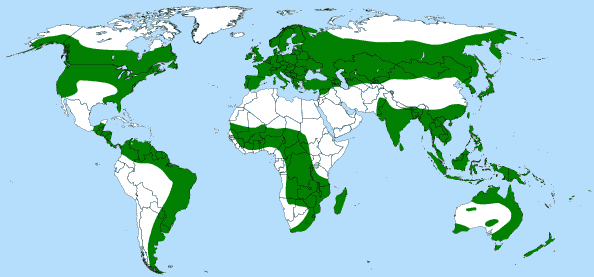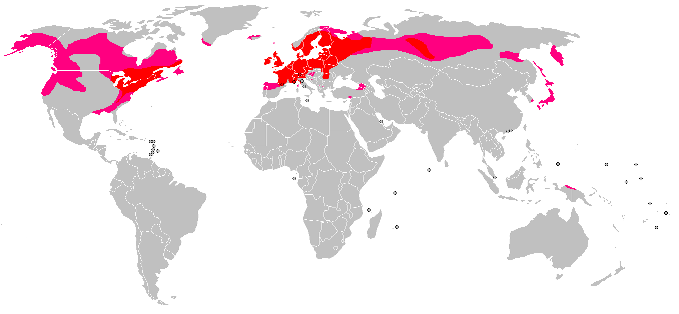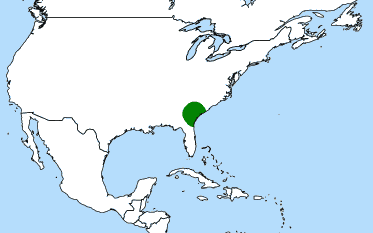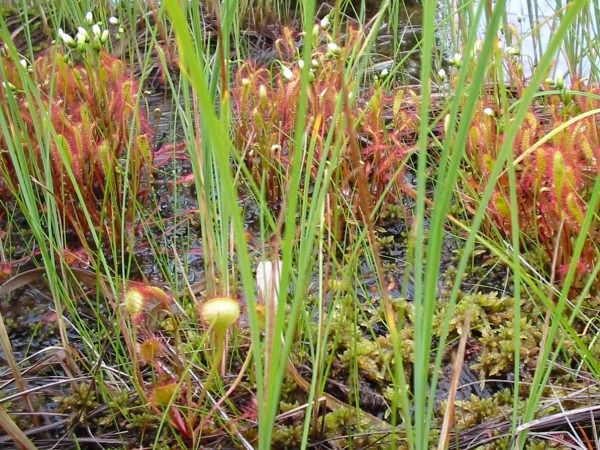(Upload on January 13 2021) [ 日本語 | English ]
Mount Usu / Sarobetsu post-mined peatland
From left: Crater basin in 1986 and 2006. Cottongrass / Daylily
HOME > Plant list (植物リスト) > Droseraceae (モウセンゴケ科)
|
[Engler's syllabus (エングラー体系)] All species are carnivorousThree genera Aldrovanda L. (ムジナモ), waterwheel plant: monotypic, A. esiculosa L. |
Dionaea J. Ellis (ハエトリグサ), venus flytrap: monotypic, D. muscipula Sol. ex J.Ellis in tropical wetlands in the North America Drosera L. (モウセンゴケ) |
|
Ca 90 spp in the world (60 spp in Australia) Inflorescence: indeterminate Leaf: insectivorous or carnivorous (捕虫葉)  Fig. Distribution of genus JapanD. anglica Hudson (ナガバノモウセンゴケ) |
D. indica L. (ナガバノイシモチソウ)
Distribution: Africa - India - southeast Asia (central Honshu) - Ausutralia D. makinoi Masam. (シロバナナガバノイシモチソウ)D. peltata Thunb. (イシモチソウ, s.l.)
var. lunata (Buch.-Ham. ex DC.) C. B. Clarke (タイワンイシモチソウ)  |
D. spathulata Labill. (コモウセンゴケ) (s.l.): 2n = 20, 40, 60
Distribution: southern Japan (south to Miyagi Prefecture) - southeast Asia - Australia - New Zealand
ssp. tokaiensis (トウカイモウセンゴケ), syn. Drosera spatulata Labill. ssp. tokaiensis Komiya et C. Shibata Introduced to JapanD. binata Labill. (サスマタモウセンゴケ), AustraliaD. burmannii Vahl (クルマバモウセンゴケ) D. intermedia Hayne (ナガエノモウセンゴケ), Europe - North America D. pedata Pers. (ヨツマタモウセンゴケ), Australia - New Zealand |
 Fig. Distribution of genus |
 Fig. Distribution of genus |
Neopolyploids (新倍数体)Neopolyploid species have been used as model plants to elucidate the consequences of hybridization and polyploidy. Two Drosera species, D. anglica Hudson (2n = 4x = 40) and D. rotundifolia L. (2n = 2x = 20), and the hybrid D. × obovata Mert. et Koch (2n = 3x = 30), which results from their crossing, have been reported from Hokkaido Island, northern Japan. Recently, we discovered unexpected higher ploidy levels within the population of these Drosera from a post-mined peatland, in Sarobetsu mire of Hokkaido. The ploidy levels were determined by flow cytometry. Polyploids were tagged and monitored at the site for three years. The morphological characteristics of the neopolyploid leaves and flowers were determined and compared to D. anglica, D. rotundifolia and D. × obovata. Seeds collected from hexaploids were incubated in a laboratory to verify their viability. Hexaploids occurred in the field over the three years of monitoring and produced a few flowers and viable seeds; however, octoploids were extinct in the second year. The leaf shape quantified by the blade length to blade width ratio showed that the ratios of hexaploids were intermediate between D. × obovata and D. rotundifolia, suggesting that the origin of hexaploids was likely to originate from the triploid D. × obovata. Polyploidy may occur in disturbed habitats more commonly than previously thought. |


We can see three Drosera species in a small area. Photos taken in a post-mined peatland, Sarobetsu mrie, on July 4 2008. |